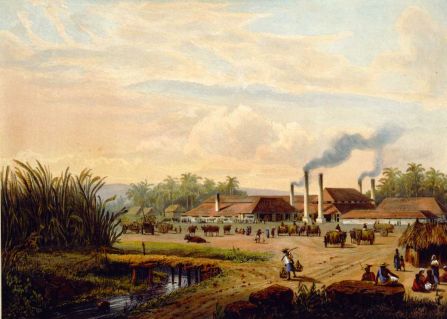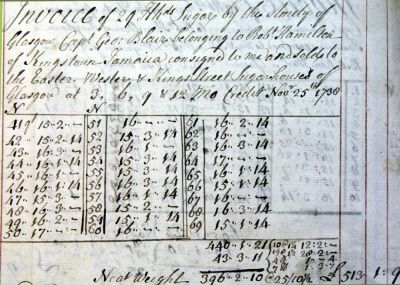|
|||||
|
|||||||
|
    An initiative of :Stichting Food-Info
|
| Food-Info.net> Products > Sugar History of sugarCane sugarIt is thought that cane sugar was first used by man in Polynesia from where it spread to India. In 510 BC the Emperor Darius of what was then Persia invaded India where he found "the reed which gives honey without bees". The secret of cane sugar, as with many other of man's discoveries, was kept a closely guarded secret whilst the finished product was exported for a rich profit. It was the major expansion of the Arab peoples in the seventh century AD that led to a breaking of the secret. When they invaded Persia in 642 AD they found sugar cane being grown and learnt how sugar was made. As their expansion continued they established sugar production in other lands that they conquered including North Africa and Spain . Sugar was only discovered by western Europeans as a result of the Crusades in the 11th Century AD. Crusaders returning home talked of this "new spice" and how pleasant it was. The first sugar was recorded in England in 1099. The subsequent centuries saw a major expansion of western European trade with the East, including the importation of sugar. It is recorded, for instance, that sugar was available in London at "two shillings a pound" in 1319 AD. This equates to several months of wages of an average labourer per so it was very much a luxury. The rich enjoyed creating sculptures of sugar to decorate their tables. When Henry III of France visited Venice, a party given in his honour featured plates, silverware, and linens all made of spun sugar. Sugar, given its expensive nature, was often assumed to be medicinal. Many of the medical guides of the 13th through 15th centuries recommend giving sugar to invalids to bolster their strength. In the 15th century AD, European sugar was mainly refined in Venice. Venice lost its monopoly in 1498, when Vasco da Gama went to India and established trade. It was however, the discovery of the Americas that changed the world consumption of sugar. On one of his first voyages Columbus took sugar cane plants to grow in the Caribbean . The climate there was so advantageous for the growth of the cane that an industry was quickly established. Sugar was in such great demand in Europe that many of the Caribbean islands became almost completely deforested to create canefields, for example Barbados, Antigua and half of Tobago. The sugar cane plant was grown en masse. Millions of people were transported from a world away, from Africa and India, to work in the rolling fields of sugar cane. Sugar production therefore was closely related to the Western slave trade. Sugar was economically so important that all European powers established or tried to establish colonies on the small Caribbean islands and many battles were fought to control the islands. Later cane sugar was planted in large plantations in other regions in the world (India, Indonesia, Philippines and the Pacific) for the European and local market.  Cane sugar factory in Netherlands East Indies around 1850 by A. Salm (Source) By 1750 there were 120 sugar refineries operating in Britain. Their combined output was only 30,000 tons per annum. At this stage sugar was still a luxury and vast profits were made to the extent that sugar was called "white gold". The situation in other West-European countries was similar.  Invoice for sugar imports from Jamaica from 1738. (Source) Governments recognised the vast profits to be made from sugar and taxed it highly. Sugar thus still remained a luxury item. This situation was to stay until the end of the 19th century when most governments reduced or abolished the tax and brought sugar prices within the means of the ordinary citizen. Beet sugarSugar beet was first identified as a source of sugar in 1747. No doubt the national and economical interests in the cane sugar plantations made sure that it stayed as no more than a curiosity in many European countries. This situation prevailed until the Napoleonic wars at the start of the 19 th century when Britain blockaded sugar imports to continental Europ . By 1880 sugar beet had replaced sugar cane as the main source of sugar on continental Europe . The introduction of beet sugar to England was delayed until the First World War when Britain 's sugar imports were threatened. Previously Britain imported mainly cane sugar from its tropical colonies. TodayAnnual consumption is now running at about 120 million tons and is expanding at a rate of about 2 million tons per year. The European Union, Brazil and India are the top three producers and together account for some 40% of the annual production. However most sugar is consumed within the country of production and only approximately 25% is traded internationally. Sugar cane is cultivated in over 100 countries and the amount of sugar from sugar cane is approximately 6 times higher than of beet sugar. Sources :
More information on sugar : |
|
| ||
| Food-Info.net is an initiative of Stichting Food-Info, The Netherlands | ||||||